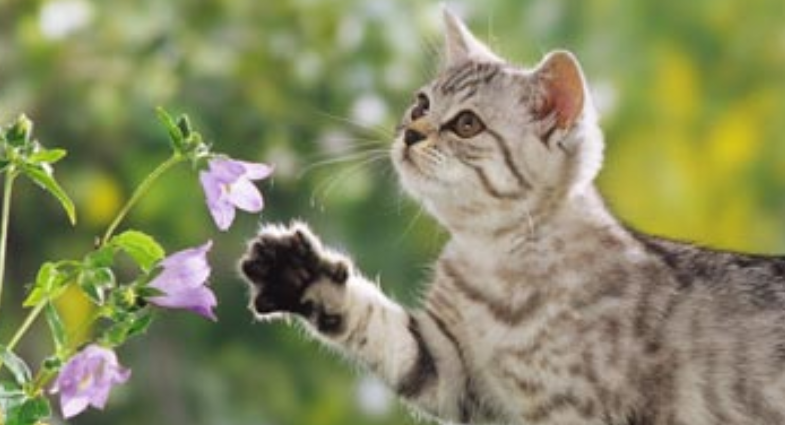Domestic cats are not the only animals that spin. Some wild cats and their close relatives also spin, and sometimes even hyenas, guinea pigs, raccoons and squirrels. Although it is easy to assume that cats spin only when they are comfortable, research shows that spinning is much more complex than that, and that it serves cats as a means of communication and as a form of self-medication.
As any cat owner knows, they often spin when they are petted, but they also spin when they want to or when they eat food, and sometimes while falling asleep. All this leads to the generally accepted opinion that cats spin only when they feel comfortable and safe, but cats also spin when they feed kittens, and experts believe that then they use spinning as a form of communication – kittens spin giving a signal to the mother that everything is fine , and mothers spin to further comfort the kittens.
It is a little less known (especially if you don’t have a cat) that cats also spin when they feel pain or when they are in stressful situations. Some vets say cats try to comfort themselves in this way, just as a man tries to pretend a fake smile when he is nervous.
Veterinarian Kelly Morgan equates this reaction with a smile. “People will laugh when they’re nervous, when they want something, when they’re happy, so maybe spinning is one such soothing gesture.”
How do cats spin?
Biologists once thought that the sound of spinning causes blood as it flows through a cat’s inferior great vein that carries blood from the lower half of the body to the heart. But recent research shows that sound is actually produced by the muscles of the larynx.
To be able to prey, the cat’s brain will send a signal (neural oscillator) to their larynx and diaphragmatic muscles. The muscles of the larynx then begin to vibrate, restricting the flow of air, and then relax allowing the air to pass freely in both directions. These muscle twitches occur at a rate of 25-150 vibrations per second, and cause a short-term separation of the vocal cords, which allows the cat to spin during inhalation and exhalation.
Each cat spins in a similar way, but if you have had the opportunity to stay near more than one cat, you may have noticed that each spins a little differently. The sound and volume of spinning can vary, but technically they are still considered “muscle tremor” and not actual vocalization.
Why do cats spin?
We’ve already listed a few reasons for spinning above, such as the pleasant or uncomfortable feeling, as well as the form of communication between the mother and her kittens. But communication doesn’t just end with mother and kittens. It is known that some domestic cats develop a certain style of spinning which they use to communicate with the owner (man), and scientists compare this to the crying of a baby.
Some cats will simply start feeding when they need something, whether they want our attention, to pet them or to feed them – just like babies who start crying. This behavior is called demanding spinning, and cats often add a certain vocalization in order to get an answer from their guardians as soon as possible. In those moments, the cat simply tells us, “I need something!”
According to researchers at the University of Sussex, domestic cats can learn to insert a sad cry within their standard spinning that is intended to irritate the human ear, and it is human nature to do something to stop this cry. The study concluded that cats simply exploit people’s innate tendencies to respond to crying. Veterinarian dr. Benjamin L. Hart says that “cats have obviously learned how to get people to feed them as soon as possible.”
Spinning has another beneficial effect on cats, and that is health. As we have already mentioned, cats also spin when they are sick, injured, or in some kind of pain. Many studies have investigated the connection between spinning and pain and concluded that spinning can act on a cat as a kind of physical therapy. Namely, research has shown that spinning can increase bone density and muscle healing. The same frequency treatment is sometimes used in humans to accelerate the healing of certain types of wounds, and experts sometimes suggest that people in these situations stay close to cats.
Research shows that cats can relieve stress and lower blood pressure better than any other pet. A 10-year study conducted at the University of Minnesota concluded that cat owners are 40% less likely to have a heart attack than people who do not have a cat, and that spinning plays a significant role in this case.
Medicinal properties aside, most experts agree that spinning is most beneficial to cats as a non-verbal way of communicating with other cats and humans.
